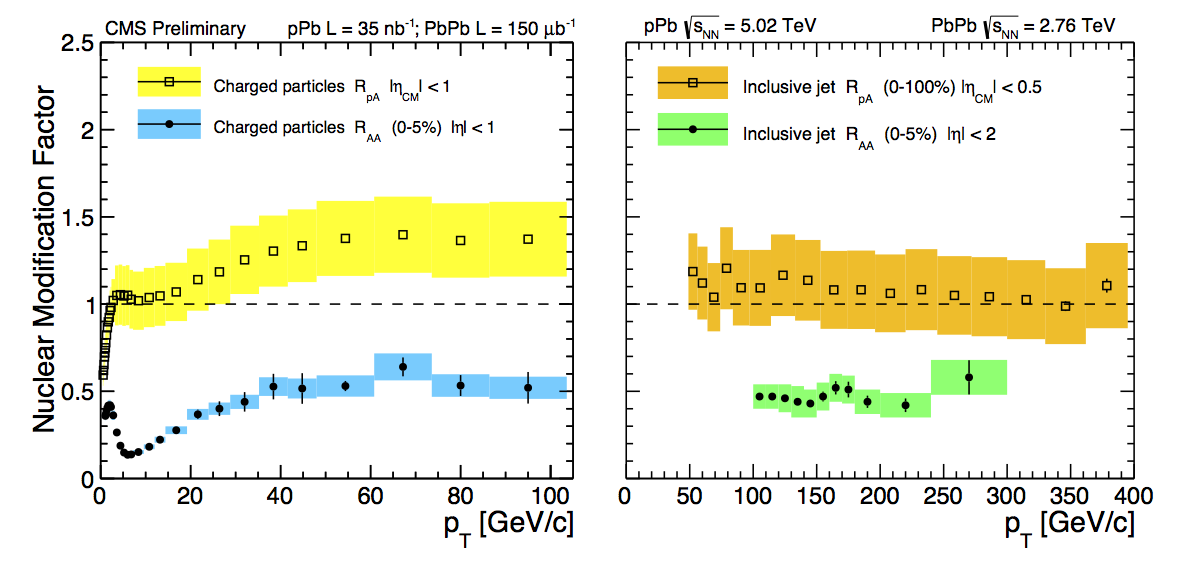
A few of the results that CMS presented at this year’s Quark Matter conference were highlighted a couple of weeks ago in the CERN Courier article that was also posted on CMS news. That article was posted before the start of the conference, so it did not include the full set of new results from CMS – and some of them were truly noteworthy.
One of the biggest recent surprises, first shown at November’s Hard Probes conference, was the charged hadron nuclear modification factor in pPb collisions (RpA). Compared to expectations from a pp reference, obtained by interpolating data from lower and higher energies, the pPb data show a significant enhancement in the yield, with a central value as high as 1.4 (Fig 1, left), a result recently confirmed by ATLAS. At Quark Matter, CMS showed results showed the RpA for jets, which was found to be closer to the slight enhancement predicted from known nuclear effects on the parton distributions (Fig 1, right). Taken together, these surprising data could point to an effective change in the fragmentation pattern of jets, for example from a modification of the quark-to-gluon jet ratio in pPb. The data also highlight urgent need for pp reference data at the same energy, which are the limiting source of uncertainty.
Open heavy flavour is another interesting avenue of exploration, as the medium interaction of heavy quarks is expected to be different than for light flavours. CMS excels at b-quark measurements, having already performed measurements of non-prompt J/ψ and b-tagged jets in PbPb. CMS has now gone one step further by measuring B meson decays exclusively. Figure 2 shows the B+/− nuclear modification factor, derived by comparing to FONLL calculations. No significant nuclear modification is found from these data, nor from similar measurements of B0 and B0s. By performing these measurements with upcoming PbPb data CMS will be able to map out the flavour dependence of parton energy loss.
A detailed understanding of nuclear effects on the parton distributions is essential for understanding medium effects in heavy-ion collisions. Electroweak bosons are useful probes in this regard as they do not suffer any significant final-state interactions. Figure 3 shows the ratio of W− production at forward and backward rapidities. This quantity shows a high degree of sensitivity to nuclear effects comparing to bare PDF predictions (CT10) and those including nuclear effects (EPS09). These data will provide excellent constraints for the next generation of nuclear PDF global fits.
All of the latest CMS heavy-ion results can be found at https://twiki.cern.ch/twiki/bin/view/CMSPublic/PhysicsResultsHIN.
— Submitted by Matthew Nguyen and Christof Roland
- Log in to post comments

